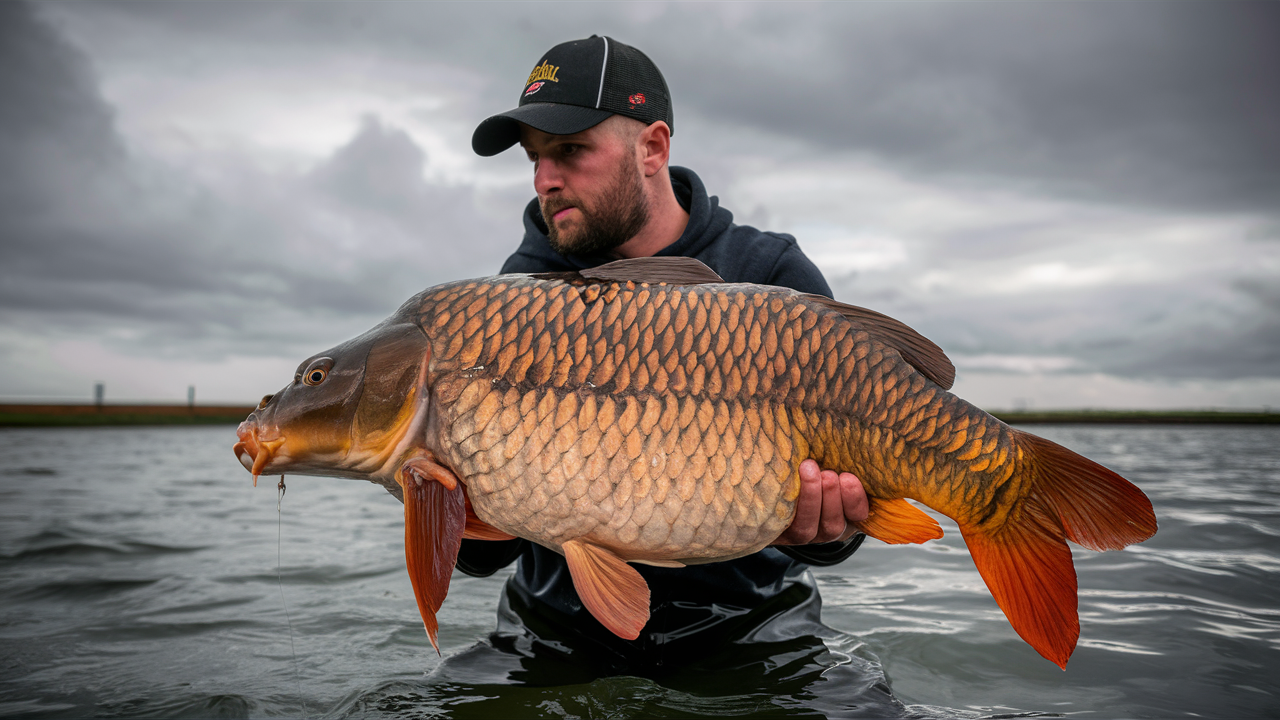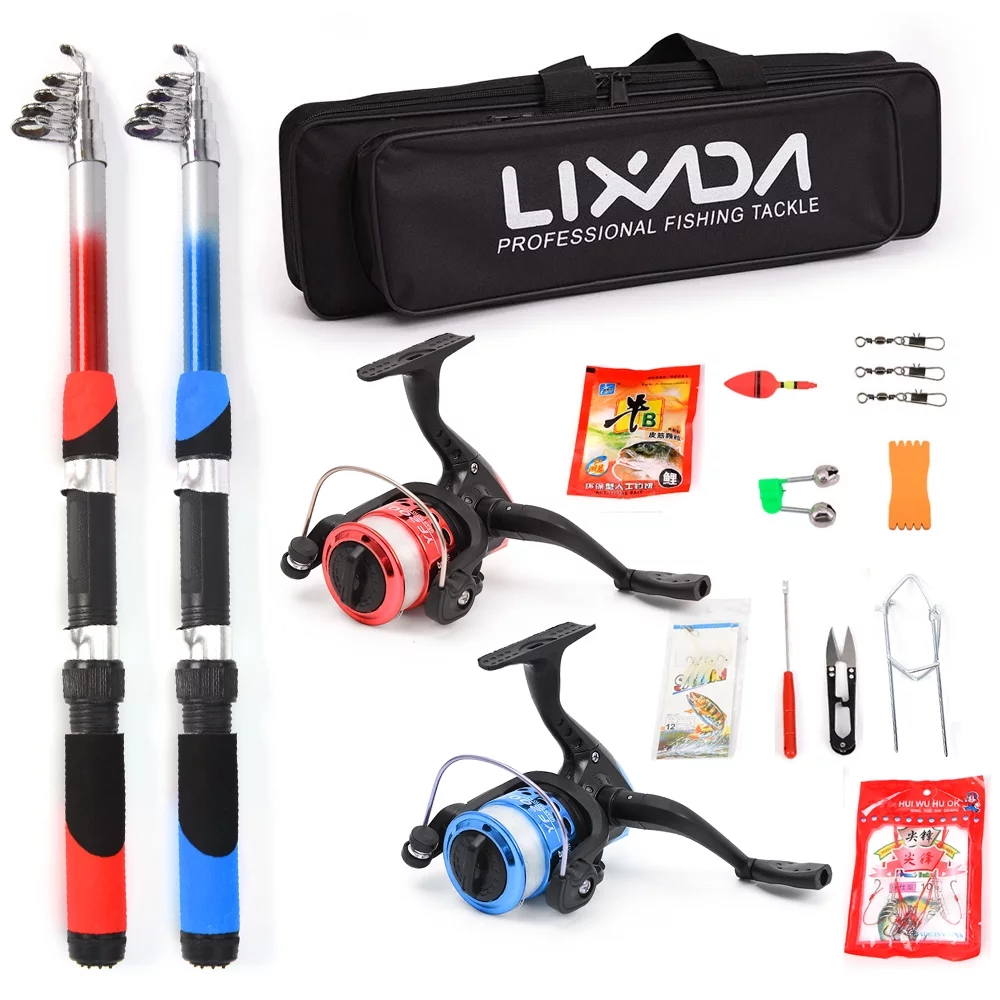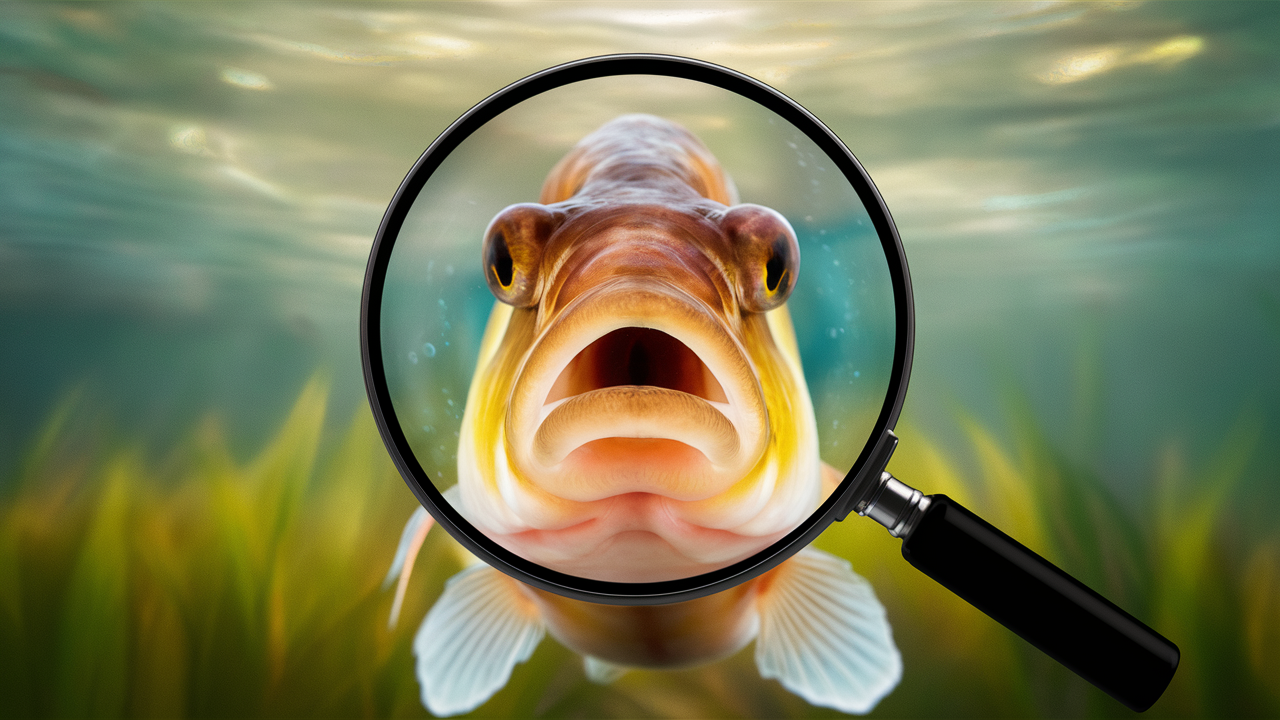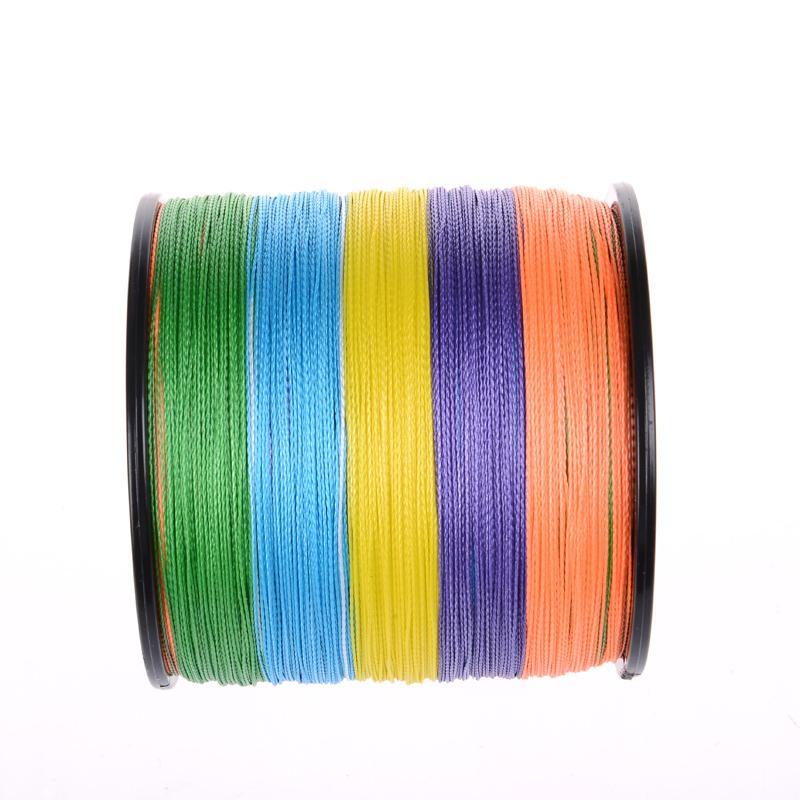
In what weather do carp bite

12 min read
In this article, we will explore In what weather do carp bite and weather conditions can affect carp biting behavior, giving you a better understanding of when and where to catch these elusive fish
Carp are a type of fish that are sensitive to changes in temperature, light, and pressure, which can impact where they can be found and when they are most active.
Understanding how different weather conditions can affect carp fishing can help you to plan your fishing trips and increase your chances of success.
What is the best time of the year to fish for carp?
The best time of year to fish for carp can vary depending on where you are fishing and the species of carp you are targeting. In general, carp are most active during the warmer months of the year, with the best fishing typically occurring from late spring to early fall.
During the spring, carp are in pre-spawn mode and can be found in shallow water areas. The water temperature is rising and the fish are more active and feeding more aggressively, making this a good time to target them.

In the fall, the water temperature is starting to cool down and the fish are beginning to become more active again. The falling leaves can also trigger a feeding frenzy as carp feed on the falling leaves and insects. They can be found in shallower water and can be more active and more willing to bite.
It’s important to note that the best time of year to fish for carp will depend on the specific conditions of the body of water you are fishing in. Some bodies of water will have a specific behavior of the fish, depending on the water temperature, the structure, the vegetation and the presence of other species.
It’s always a good idea to research the specific body of water you will be fishing in and to talk to local anglers to find out when the best time to fish for carp is.
In what weather do carp bite by seasons
Weather is the day-to-day state of the atmosphere, and climate is how the atmosphere is over time. Spring is the season between winter and summer. In spring, the weather becomes warmer and the days get longer. Summer is the warmest season of the year. The days are the longest, and the weather is usually the hottest in summer. Autumn is the season between summer and winter.
The days get shorter, and the weather gets cooler in autumn. Winter is the coldest season of the year. The days are the shortest, and the weather is usually the coldest in winter.
Carp bite In Spring Season
Carps are typically more active in the spring as the water warms up. They will start to move toward the shallow areas and will be more willing to bite. Mild and overcast weather with a light breeze is often good for carp fishing during this time, as it can help to keep the fish in shallow water and make them more active.
Favorable conditions for the opening of the carp season begin at the end of spring when the water temperature reaches 15-20°C and stabilizes.
And in the first spring days after the final melting of the ice from the reservoirs, the bite remains still sluggish. Everything is explained by the low temperature of the water, in which the fish does not react even to the most expensive and popular baits. Before you go out for carp fishing, you need to make sure that the water is warm enough and the fish are active.
The optimum temperature regime for carp fishing is 15-17 °C.
Carp bite In Summer Season
During the summer, carp tend to move towards deeper water to avoid warmer surface temperatures. This can make them harder to catch, but fishing in the early morning or late evening when the water is cooler can be more productive.
Cloudy days with a light breeze can be ideal, as it can keep the fish in shallower water, making them more active and willing to bite.

In summer, the biting of representatives of the carp family is the most intense. Already in July-August, carp peck at almost all types of baits, and almost around the clock. For carp fishing in June and July, it is not necessary to use complex technologies or fishing secrets. It is enough to choose a promising section of the reservoir, feed it well and throw gear into the water.
But do not forget that sometimes the activity of fish depends not on the weather, but on such factors:
- Feed base;
- Diet;
- Features of the water area.
Also, carp is well active for 1-2 weeks before spawning and after it. This is not strange, because at such a time the fish awakens an incredible appetite and the need to replenish the reserve of strength before the upcoming spawning.
A few days after the reproduction of the offspring, the carp can get sick and recover, not paying attention to food. But over time, the bite improves again. As for spawning, it is problematic to name the exact date of its beginning.
This is due to the climatic features of different regions. The key factor to pay attention to is the temperature of the water. If at the current time, it reaches a mark of 20-22 degrees, then there is a high probability that the mating season has begun in the fish. In any case, the best time for carp fishing is summer.
Carp Bite In the Autumn/Fall Season
As the water temperature cools down in the fall, carp will start to become more active again, and they will move back towards shallower water. This can be a good time to target carp, especially during periods of overcast and mild weather, as they are more likely to be feeding.

With the advent of autumn cooling, the activity of carp decreases significantly.
This is determined by the following reasons:
- Rapid decrease in water temperature;
- Wilting and rotting of algae, which leads to the release of an unpleasant odor for carp;
- Caution of the fish due to the high transparency of the water;
- Deterioration of oxygen balance;
- Shortening of daylight hours.
Carp Bite In the Winter Season
Carps can be less active in the winter when the water is cold, and they will often be found in deeper water. They can be harder to catch during this time, but mild and sunny weather can be a good time to try fishing for carp as the warmer temperatures can trigger them to feed.
To summarize, we can say that a good period when carp peck comes at the end of the spring season and lasts throughout the summer.
The weather conditions that are most conducive to carp biting
Warm temperatures with little or no wind are ideal for carp fishing. Carp are best caught early in the morning or late in the evening when the sun is not too high in the sky.
Carp are opportunistic feeders that will bite in a variety of weather conditions, but there are some general guidelines that can help increase your chances of success when fishing for carp.
Water temperature
Carp are more active and tend to feed more aggressively in warmer water temperatures, typically between 60 and 70 degrees Fahrenheit (15-21 degrees Celsius). In colder water, they may become less active and less likely to feed.
Cloud cover
Carp are often more active and feed more readily on overcast days, as they are less wary of predators when the sky is cloudy.
Wind
A moderate wind can often help to stir up the water and make it easier for carp to locate food. In very windy conditions, however, they may become more cautious and less likely to feed.
Barometric pressure
Some anglers believe that carp are more likely to bite when the barometric pressure is stable or rising, as opposed to falling.
Time of day
Carp are often more active and feed more aggressively in the early morning and late afternoon.

The months of May, June, July, and August are typically the best months to fish for carp. Carp is a species of freshwater fish that is native to Europe, Asia, and Africa. They are a popular target for anglers as they are large and can put up a good fight when hooked.
Carp are most commonly caught using baits such as bread, corn, or worms and are often found in lakes, ponds, and rivers.
The weather conditions that are most conducive to carp biting are warm weather with little or no wind. The best time of day to catch carp is early morning or late evening when the sun is not too high in the sky. The months of May, June, July, and August are typically the best months to fish for carp.
Carp is a fun and challenging fish to catch, and the rewards can be great. If you’re looking to add something new to your fishing repertoire, give carp a try – you might just be surprised at how much you enjoy it!
Best weather for carp fishing
When taking into account the factors on which the success of fishing depends, it is important to pay attention to the weather. For many fishing enthusiasts, it is no secret that the weather conditions are far from being favorable for a good bite every day. And it’s not the numbers of the calendar, but the weather.

For example, on a hot summer day, fish can ignore baits, and in light winds and drizzling rain, they intensively look for food. So what is the best weather for carp fishing ?
Let’s single out the main periods of maximum activity of this fish:
- With a stable increase in water and air temperature;
- In clear sunny weather with a little cloudiness and a light breeze;
- In stable warm weather with drizzling rain;
- In the absence of sudden changes in atmospheric pressure.
Partial or complete absence of biting is noticed:
- During heavy rain and thunderstorms;
- During a period of sharp or prolonged cold snaps;
- With strong wind;
- If it is hot or stuffy;
With unpredictable changes in atmospheric pressure. So, in steadily warm weather without sudden pressure drops, carp are best caught.
How bite depends on the time of day
The carp fisherman should also take into account the time of day when fishing will take place.
After all, each underwater inhabitant has a certain daily routine:
- In summer, carp bite well after sunset and at dawn, especially when it comes to July. Catching carp in hot weather does not guarantee good results.
- In the spring, good activity appears closer to lunchtime, when the sun rises high and warms the water, awakening the appetite.
- The same is observed in autumn. Fishing is best done in the afternoon and afternoon.
- Thus, the bite depends on the time of day and season: the most optimal period is in the spring and autumn after lunch, and in the summer - in the evening.
Carp fishing is a truly exquisite and exciting activity. But in order not to leave the reservoir disappointed, it is important to pay attention in advance to all factors that can affect the activity of fish and bite. In this case, you will be able to catch a dozen real trophies.
The reasons why carp bite best in certain weather conditions
There are a few reasons why carp bite best in certain weather conditions. One reason is that the fish are more active in warm weather, so they are more likely to bite. Another reason is that the water is warmer in warm weather, so the fish are more comfortable and more likely to bite. Finally, the warm weather brings more insects and other food sources for the fish, so they are more likely to be hungry and looking for a meal.
The benefits of fishing for carp in good weather conditions
Fishing for carp can be a great experience, especially when the weather conditions are good. Carp are a type of fish that are known to put up a good fight, so they can be great to catch for sport. In addition, carp are a good source of food and can be cooked in a variety of ways. When the weather is good, carp fishing can be a lot of fun.

The fish are more active and easier to catch. In addition, the scenery is usually more pleasant when the weather is nice. If you are looking to get the most out of your carp fishing experience, it is definitely worth it to wait for good weather conditions.
The drawbacks of fishing for carp in poor weather conditions
Fishing for carp in poor weather conditions can be extremely difficult and extremely dangerous. The first and most obvious drawback is the weather itself. Poor weather conditions can include high winds, waves, strong currents, and low visibility. All of these conditions make it difficult to fish for carp, and can even put anglers at risk.
High winds can blow boats away from their intended fishing spot, waves can swamp boats, and strong currents can pull boats away from shore.
All of these factors can make fishing for carp in poor weather conditions extremely dangerous and should be avoided if possible.
Conclusion
Carp are a popular game fish that can be found in many freshwater environments, and their biting behavior can be affected by various factors including weather conditions.
In this article, we discussed how weather conditions can impact carp biting behavior throughout the seasons.
Springtime is the time to focus on pre-spawning carp, which can be caught in the shallow waters, mild and overcast weather with light breeze can make them more active and willing to bite.
Summertime can be harder to catch as they are focused on spawning, but early morning or late evening fishing when the water is cooler can be more productive.
In fall, as the water temperature cools down, the carp will start to become more active again and they will move back towards shallower waters, mild and overcast weather can be ideal.
Wintertime can be a harder time to catch as they are less active, but mild and sunny weather can help to trigger their feeding behavior.
It’s essential to keep in mind that weather and water conditions can vary depending on the body of water you are fishing in, so it’s a good idea to check the forecast, and water temperature, and talk to local anglers to get an idea of what to expect.


